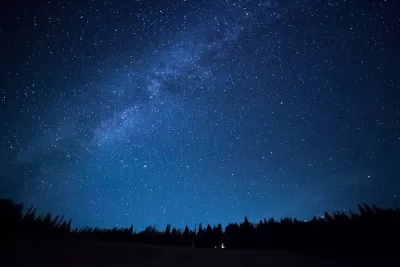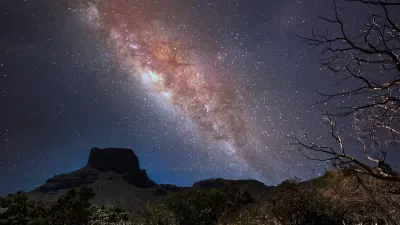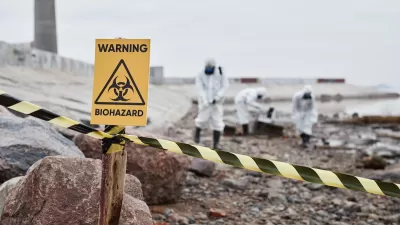Why light pollution harms humans and the environment.

A Q&A in the Daily Yonder between Anya Petrone Slepyan and astrophotographer Peter Lipscomb explains the importance of dark skies for humans.
Lipscomb calls the night sky ‘the world’s oldest natural resource,’ saying, “the night sky is both a global ecosystem and something that has informed and inspired our kind for all the thousands of years of human history.” From using it to create calendars and navigation to its spiritual significance across cultures, humans have relied on the sky and the stars throughout our history.
Now, “What was common to the human experience across the globe less than 150 years ago has now become the domain of a few.” For Lipscomb, this means that we are “losing an opportunity to connect to a part of our natural world that defines what it means to be a creature on this planet.” Additionally, the loss of dark nights can disrupt our rest and sleep cycles, leading to health problems.
Lipscomb supports efforts to mitigate light pollution. His suggestions: “Light things only to the level they need to be lit;” “Keep the light facing downwards;” “Avoid light trespassing by setting and shielding the light properly so that it is contained within the property of its origin;” and “Avoid blue-spectrum LED lights.” For Lipscomb, “All it takes is just being sensible as far as how we use our outdoor lighting.”
FULL STORY: Q&A: Why Do Humans Need Dark Skies?

Study: Maui’s Plan to Convert Vacation Rentals to Long-Term Housing Could Cause Nearly $1 Billion Economic Loss
The plan would reduce visitor accommodation by 25,% resulting in 1,900 jobs lost.

North Texas Transit Leaders Tout Benefits of TOD for Growing Region
At a summit focused on transit-oriented development, policymakers discussed how North Texas’ expanded light rail system can serve as a tool for economic growth.

Using Old Oil and Gas Wells for Green Energy Storage
Penn State researchers have found that repurposing abandoned oil and gas wells for geothermal-assisted compressed-air energy storage can boost efficiency, reduce environmental risks, and support clean energy and job transitions.

Private Donations Propel Early Restoration of Palisades Playground
Los Angeles has secured over $1.3 million in private funding to restore the Pacific Palisades playground months ahead of schedule, creating a modern, accessible space that supports community healing after recent wildfires.

From Blight to Benefit: Early Results From California’s Equitable Cleanup Program
The Equitable Community Revitalization Grant (ECRG) program is reshaping brownfield redevelopment by prioritizing projects in low-income and environmental justice communities, emphasizing equity, transparency, and community benefits.

Planting Relief: Tackling Las Vegas Heat One Tree at a Time
Nevada Plants, a Las Vegas-based nonprofit, is combating the city’s extreme urban heat by giving away trees to residents in underserved neighborhoods, promoting shade, sustainability, and community health.
Urban Design for Planners 1: Software Tools
This six-course series explores essential urban design concepts using open source software and equips planners with the tools they need to participate fully in the urban design process.
Planning for Universal Design
Learn the tools for implementing Universal Design in planning regulations.
Ascent Environmental
Borough of Carlisle
Institute for Housing and Urban Development Studies (IHS)
City of Grandview
Harvard GSD Executive Education
Toledo-Lucas County Plan Commissions
Salt Lake City
NYU Wagner Graduate School of Public Service





























